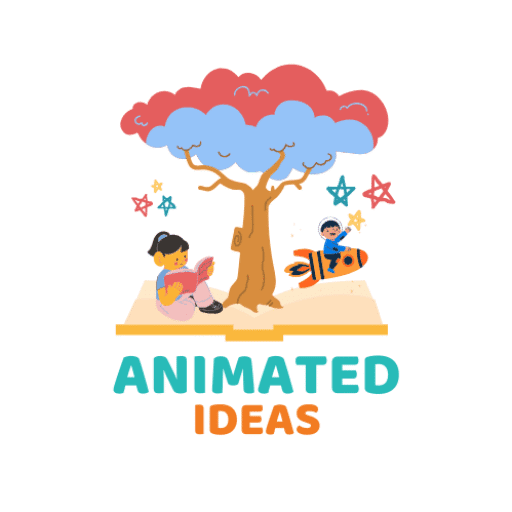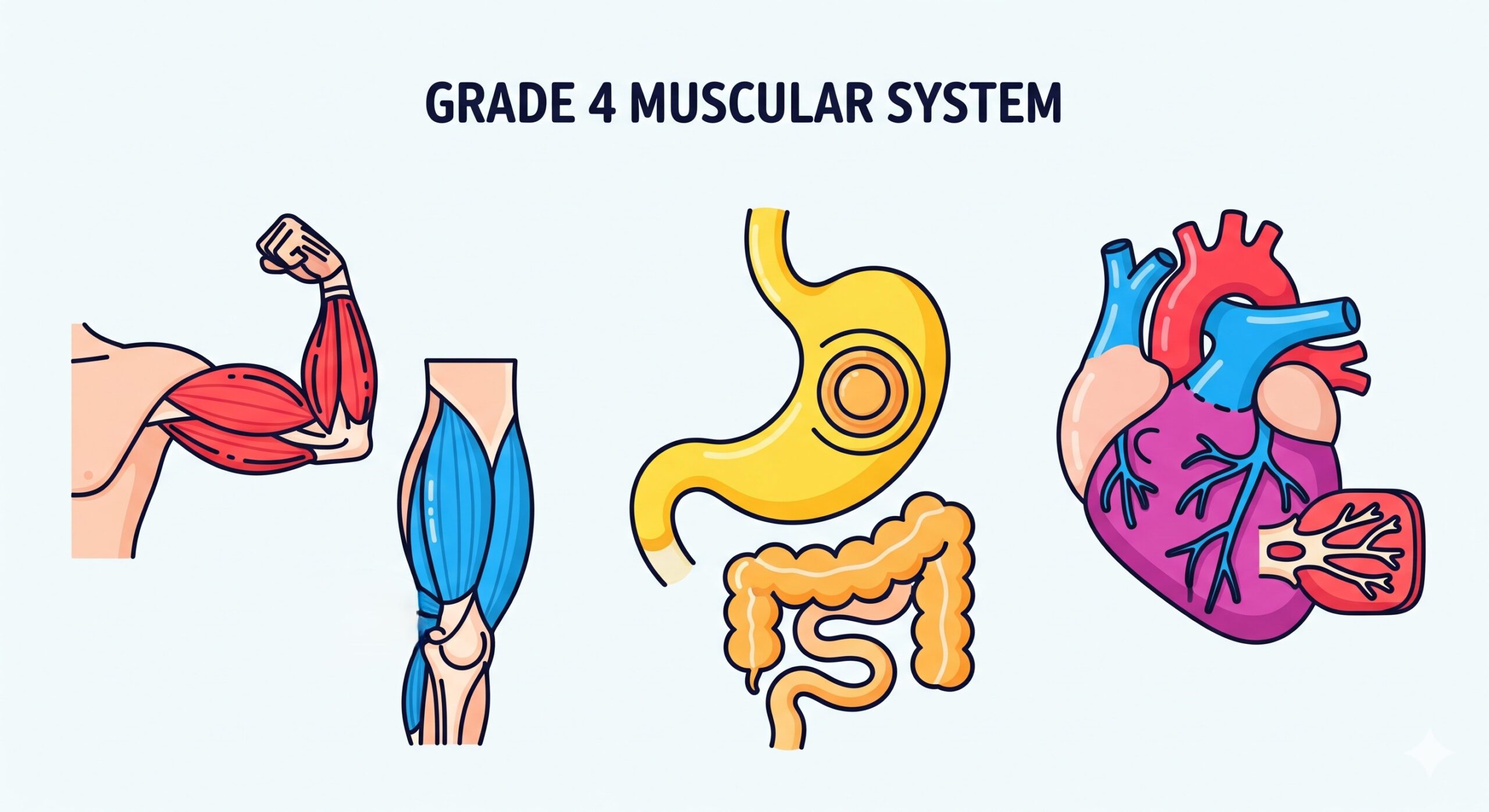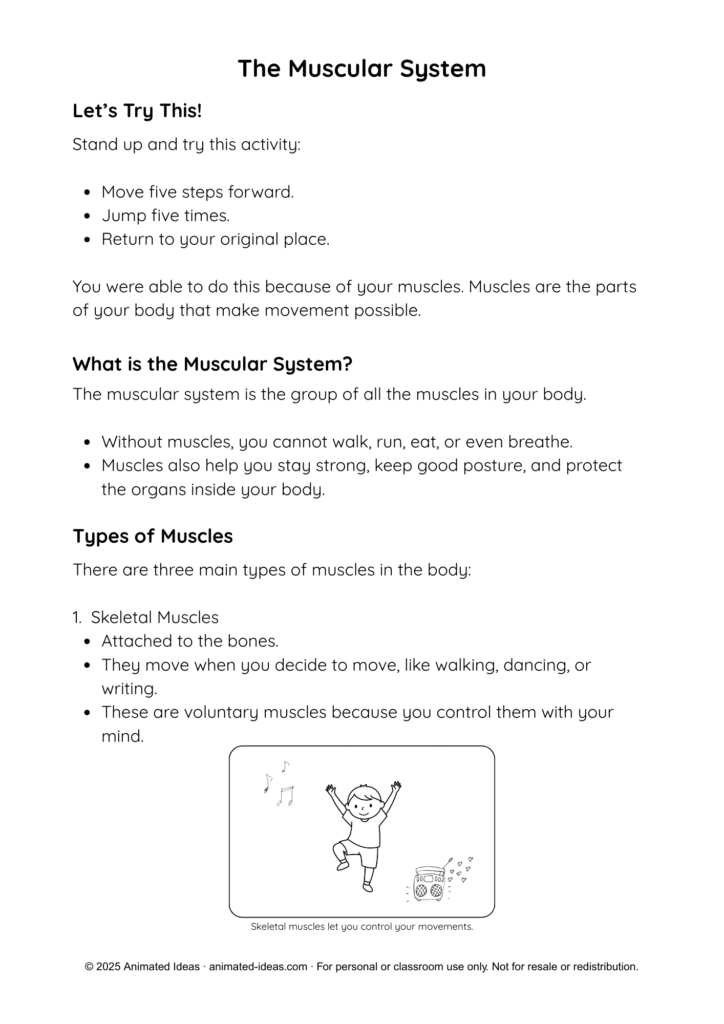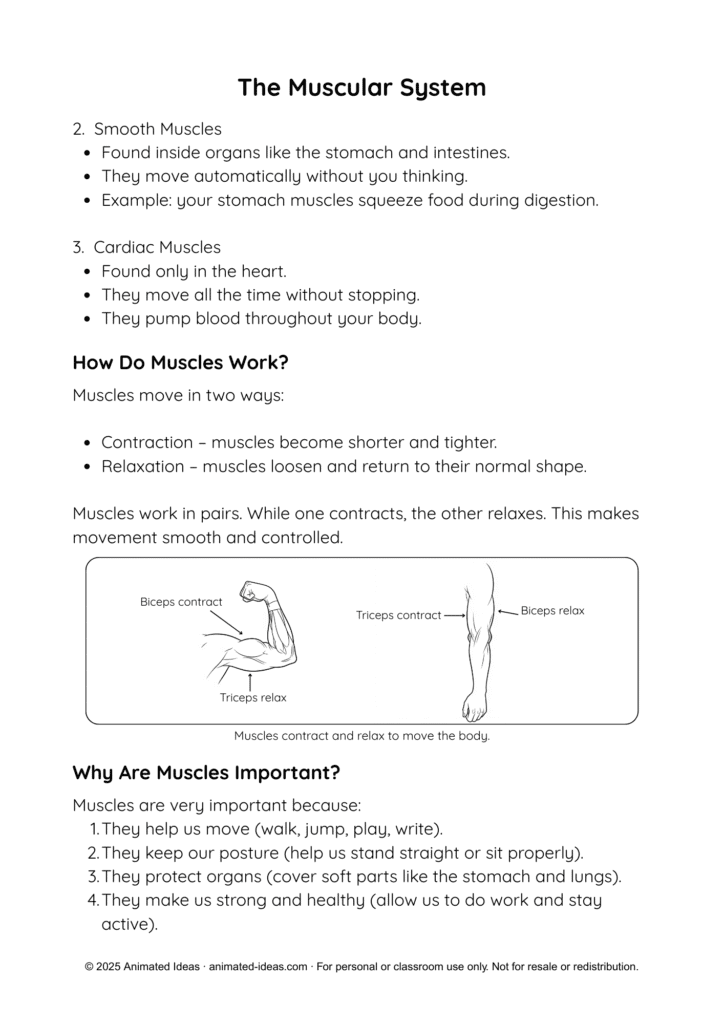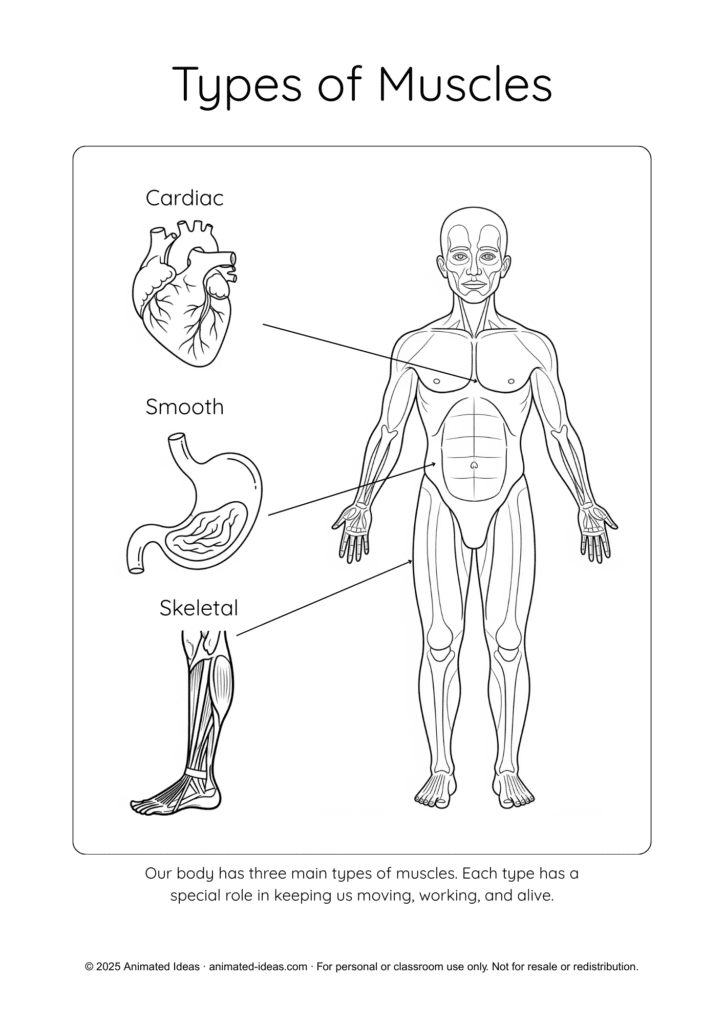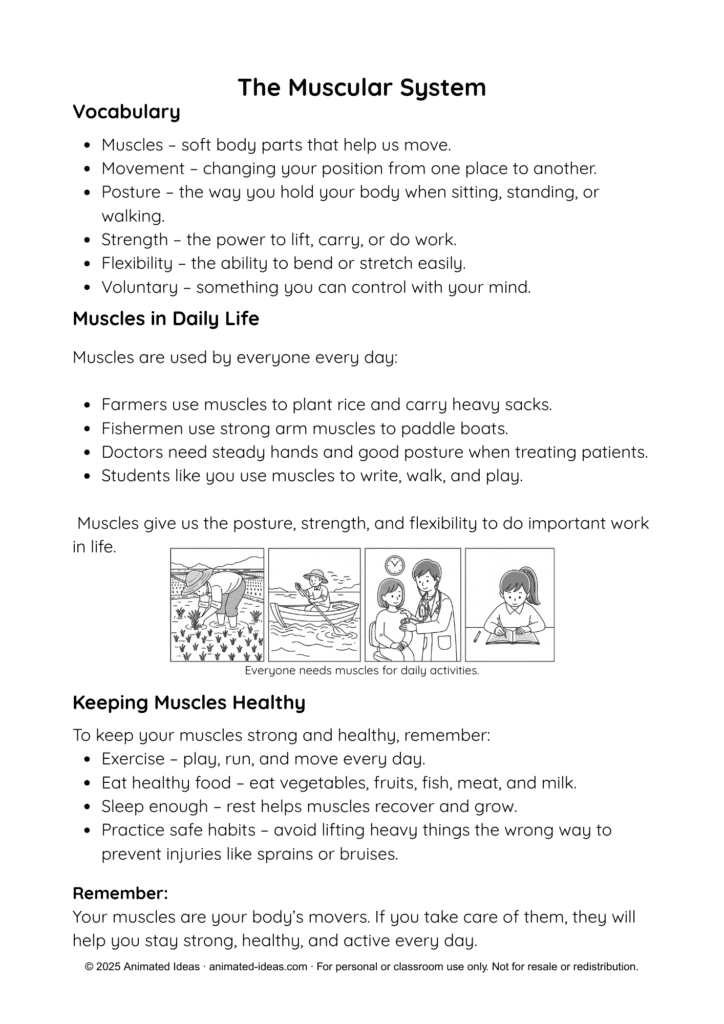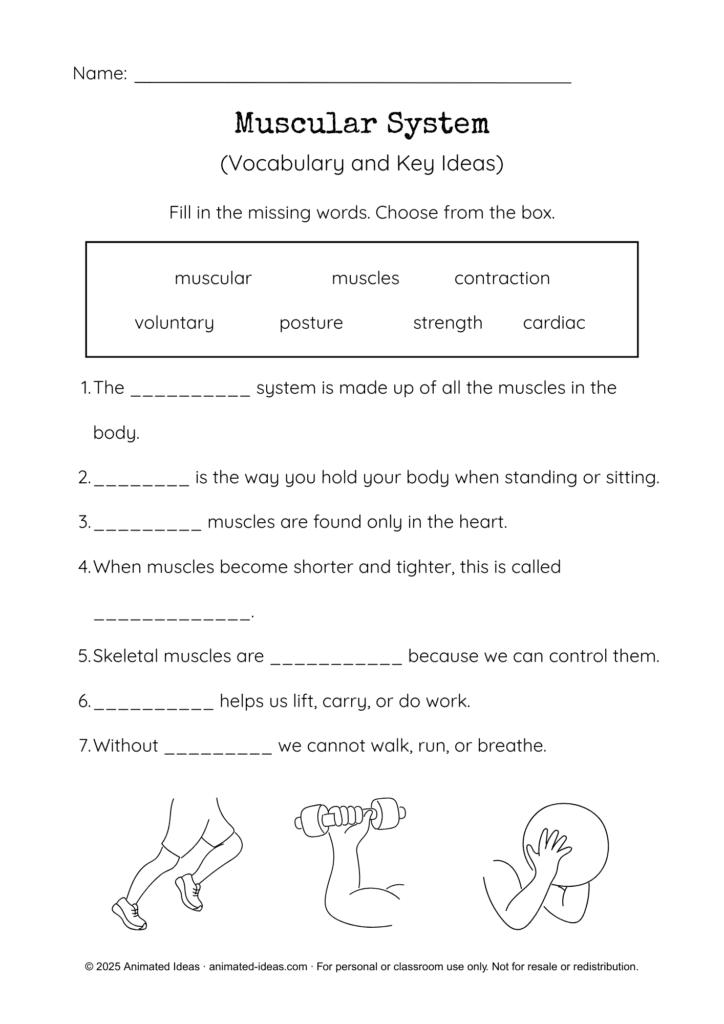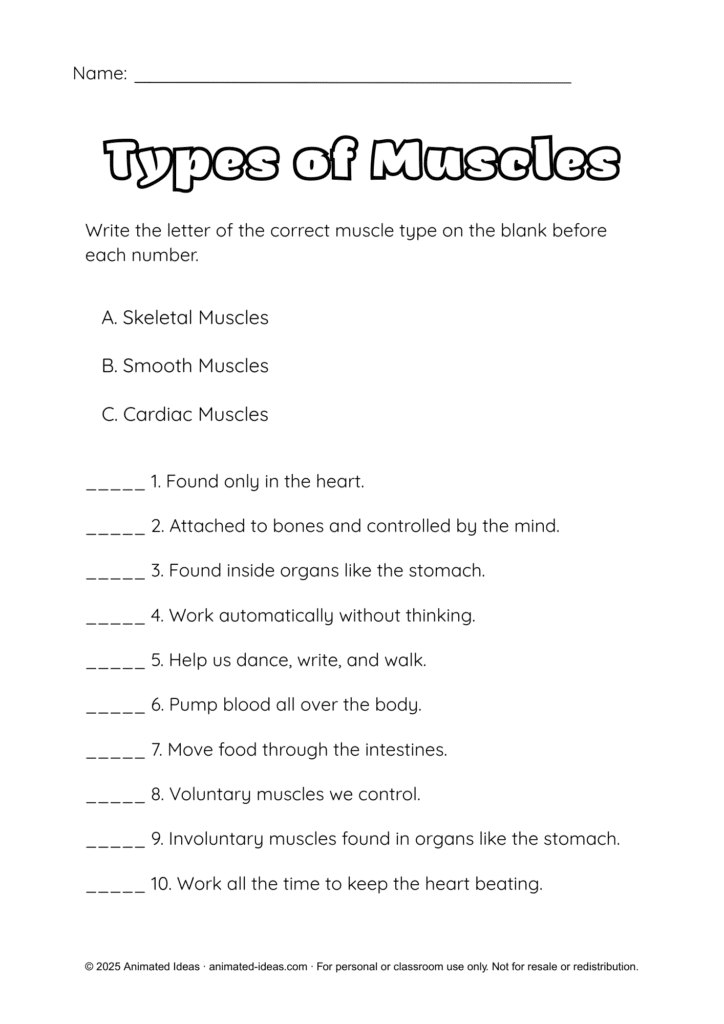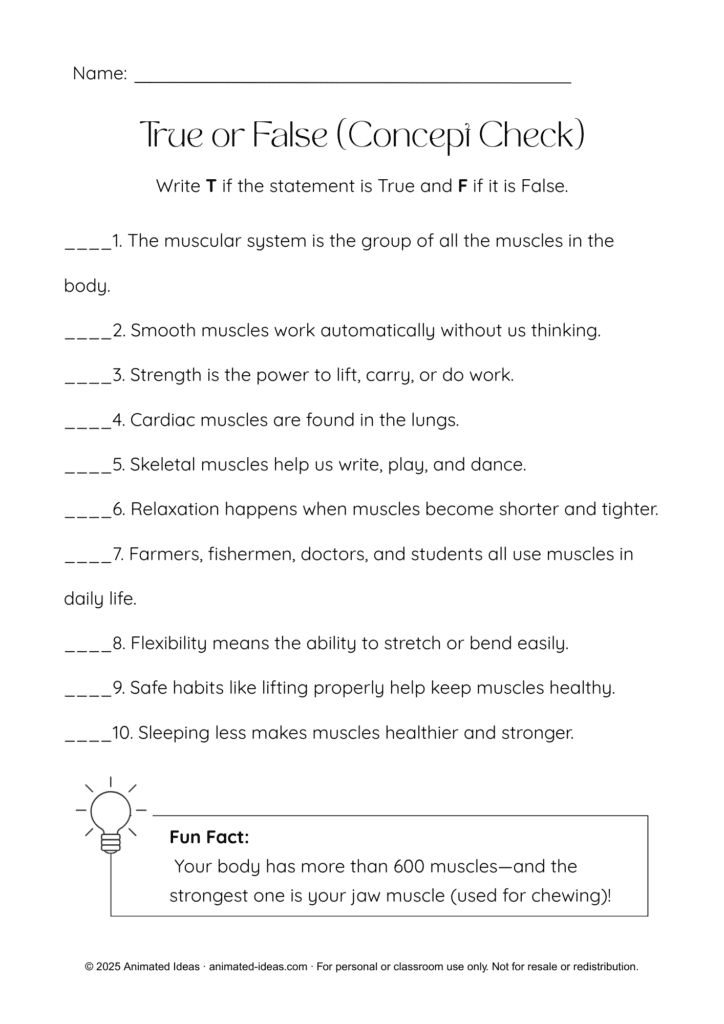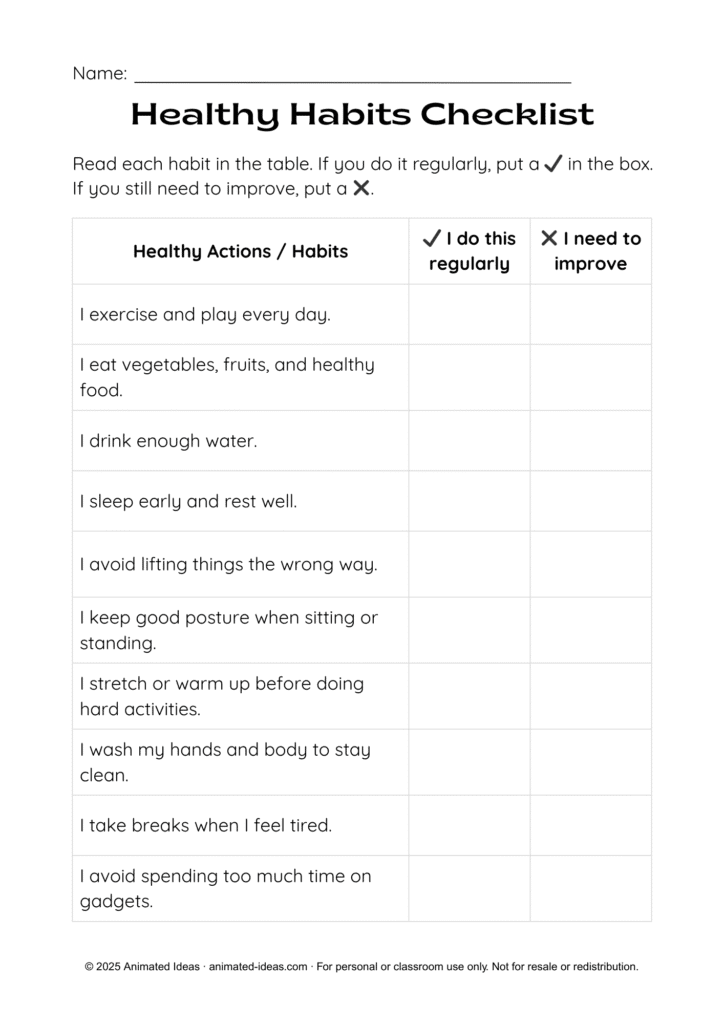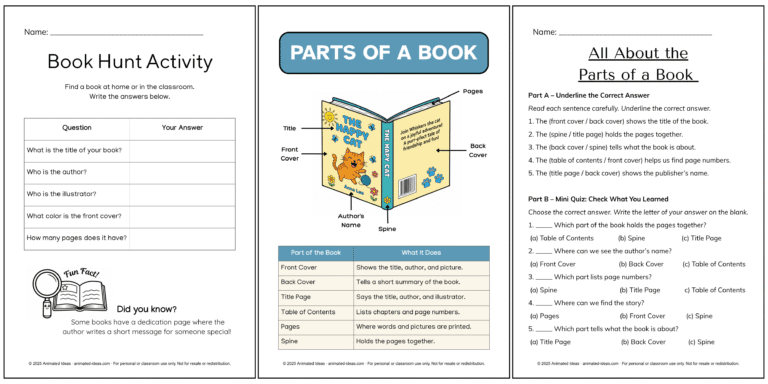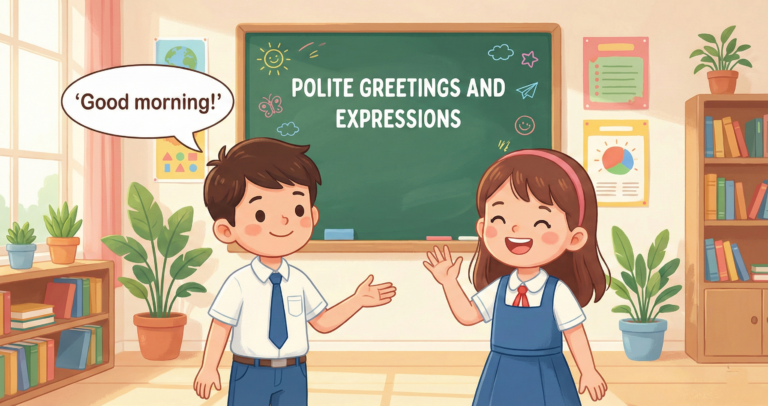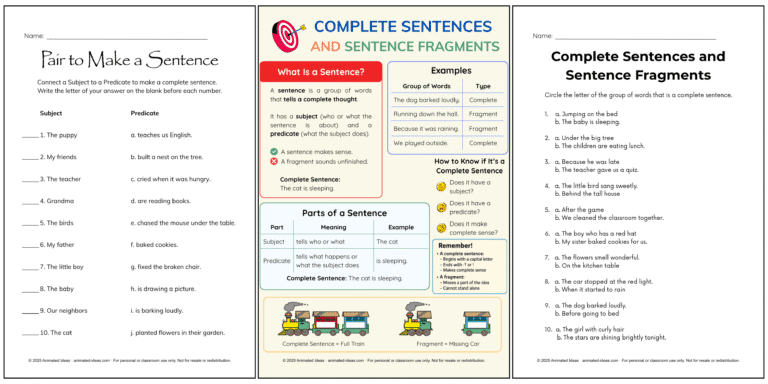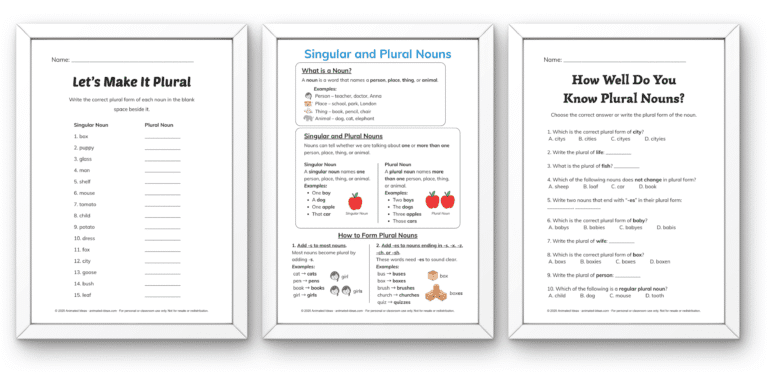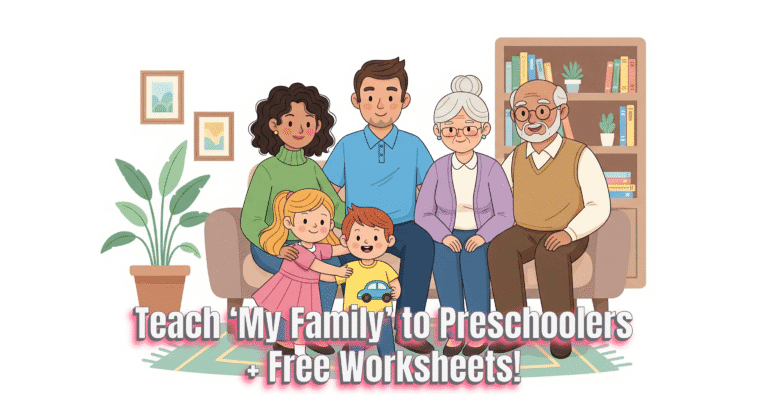The Muscular System
The muscular system is one of the most important systems of the human body. It is made up of more than 600 muscles that work together to help us move, stay strong, and stay alive. Without muscles, a person would not be able to walk, run, eat, or even breathe.
Functions of the Muscular System
Muscles are soft tissues that can contract (tighten) and relax (loosen). These actions allow the body to perform different movements. The muscular system has several main functions:
- Movement – Muscles pull on bones to create movement, such as walking, jumping, writing, or smiling.
- Posture – Muscles help the body maintain its position, whether standing, sitting, or walking.
- Protection – Muscles cover and protect delicate organs inside the body, such as the lungs and stomach.
- Strength and Flexibility – Muscles provide the power to lift, carry, and bend. They also allow the body to stretch and move easily.
- Life Functions – Some muscles, such as the heart and the muscles used for breathing, work automatically to keep us alive.
Types of Muscles
There are three main types of muscles in the human body. Each type has a special function:
- Skeletal Muscles
- These muscles are attached to the bones.
- They move when a person decides to move, such as walking, dancing, or writing.
- They are called voluntary muscles because they are controlled by the mind.
- Example: the muscles in the arms and legs.
- Smooth Muscles
- These muscles are found inside organs, such as the stomach, intestines, and blood vessels.
- They work automatically without conscious control.
- Their job is to help organs function properly, such as squeezing food in the stomach during digestion.
- Example: the muscles of the digestive system.
- Cardiac Muscle
- This muscle is found only in the heart.
- It works all the time without stopping, pumping blood throughout the body.
- Like smooth muscles, it is involuntary, meaning it cannot be controlled by the mind.
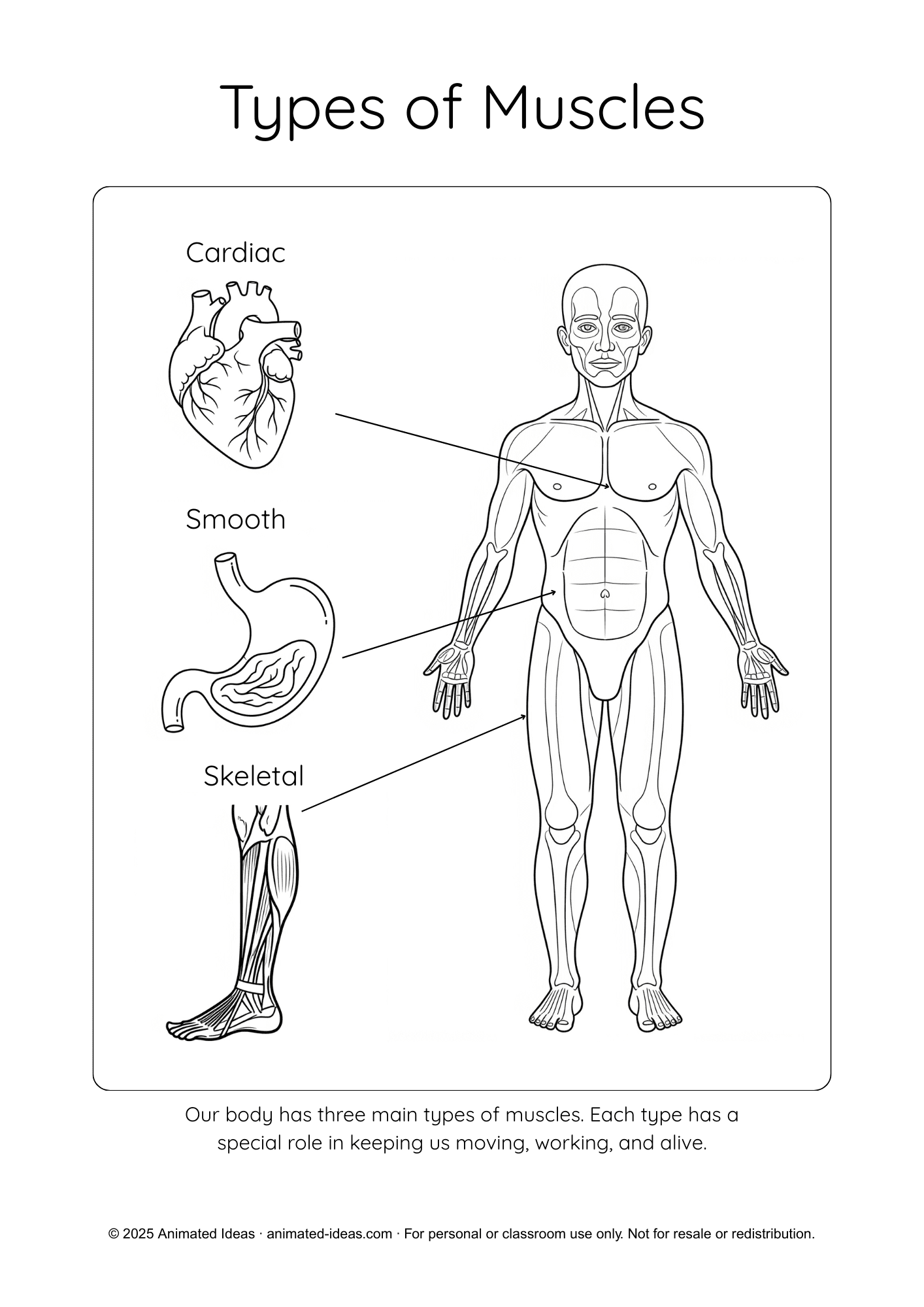
How Muscles Work
Muscles work by contracting (becoming shorter and tighter) and relaxing (returning to their normal shape). Most muscles in the body work in pairs. When one muscle contracts, the opposite muscle relaxes. This coordination allows smooth and controlled movement.
For example, when bending the arm, the biceps muscle contracts while the triceps muscle relaxes. When straightening the arm, the opposite happens.

Importance of Muscles in Daily Life
Muscles are used in all kinds of work and activities. Farmers use muscles to plant rice and carry heavy loads. Fishermen use arm and back muscles to paddle boats. Doctors depend on steady hand muscles to treat patients. Students use muscles to write, walk, and play.
Muscles give the body the strength, posture, and flexibility needed for everyday tasks and for staying healthy.
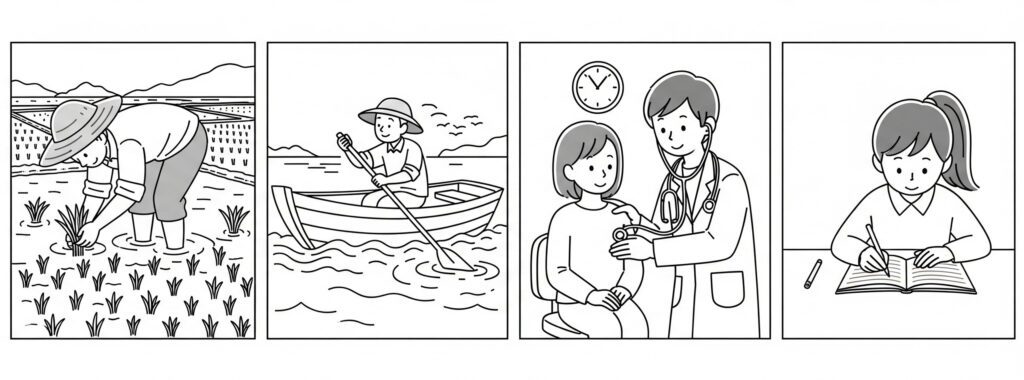
Keeping Muscles Healthy
Muscles need proper care to remain strong and active. Here are ways to keep them healthy:
- Exercise: Daily physical activity strengthens muscles and keeps them in good condition.
- Healthy Food: Eating vegetables, fruits, fish, meat, and milk provides nutrients that muscles need to grow and repair.
- Rest and Sleep: Muscles recover and become stronger when the body rests.
- Safe Habits: Avoid lifting heavy objects incorrectly or overusing muscles to prevent injuries such as sprains and strains.
Summary
The muscular system is the body’s system of movement. With more than 600 muscles, it allows people to walk, run, play, write, and perform important tasks. There are three types of muscles: skeletal muscles, which are voluntary; smooth muscles, which are involuntary; and cardiac muscle, which keeps the heart beating. Muscles work by contracting and relaxing, usually in pairs. They are essential for movement, posture, protection of organs, and overall strength. To stay strong and healthy, muscles must be exercised, nourished with healthy food, rested properly, and protected from injury.
For updates and free resources, follow us:
📺 YouTube: Animated Ideas
📘 Facebook Page: Animated Ideas
👩🏫 Facebook Group: Learning Resources for Kids
